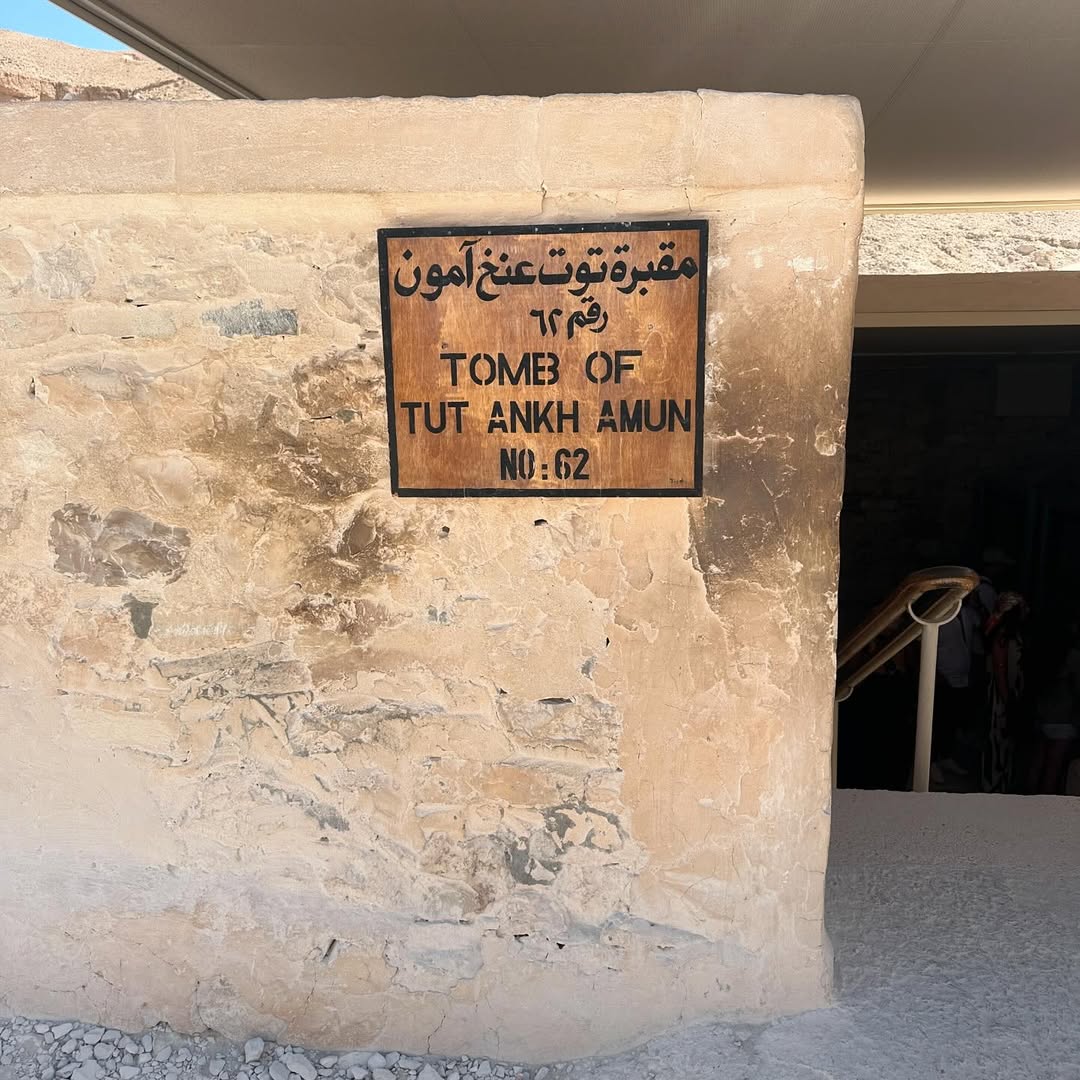Tomb Of Tut Ankh Amun Luxor
Tomb of Tutankhamun (KV62): Egypt’s Most Famous Archaeological Discovery
Introduction: The World’s Greatest Ancient Treasure
Nestled in the Valley of the Kings near Luxor, the modest-sized Tomb of Tutankhamun (KV62) represents one of the most significant archaeological discoveries in history. Though small compared to other royal tombs, its global fame stems from being the only nearly intact pharaonic burial ever found, revealing unprecedented insights into New Kingdom funerary practices.
Historical Context: The Boy King’s Reign
Tutankhamun ruled during:
-
The 18th Dynasty (c. 1332-1323 BCE)
-
The tumultuous Amarna Period aftermath
-
A brief 9-year reign beginning at age 8/9
-
A restoration of traditional Egyptian religion
Discovery: Howard Carter’s Historic Find
-
November 4, 1922: First step uncovered
-
November 26: “First glint of gold” seen
-
Funded by Lord Carnarvon
-
Took 10 years to fully excavate
Tomb Layout and Architecture
Despite its small size (only 110m²), the tomb contains:
-
Descending Staircase
-
Corridor
-
Antechamber
-
Annex
-
Burial Chamber
-
Contained the golden shrines and sarcophagus
-
Famous wall paintings
-
-
Treasury
The Burial Chamber’s Marvels
Wall Paintings:
-
Unique golden-yellow color scheme
-
Scenes from the Amduat (Book of the Dead)
-
Depictions of Tutankhamun with gods
-
The Opening of the Mouth ceremony
Sarcophagus:
-
Quartzite outer coffin
-
Three nested golden coffins
-
Famous gold death mask (11kg solid gold)
-
Mummy with over 140 grave goods
Treasure Contents:
-
Over 5,000 artifacts found
-
Golden shrines and statuettes
-
Chariots and weapons
-
Jewelry and ceremonial objects
-
Everyday items for the afterlife
Scientific Revelations
Modern examinations revealed:
-
CT scans showing possible chariot accident injuries
-
DNA evidence of malaria and genetic disorders
-
Forensic reconstruction of his face
-
Evidence of hasty burial preparations
Conservation Challenges
The tomb faces ongoing preservation issues:
-
Humidity from visitors’ breath
-
Dust accumulation
-
Potential light damage to pigments
-
Structural stresses
Visitor Experience Today
What You’ll See:
-
The burial chamber with sarcophagus
-
Wall paintings (some reproduction panels)
-
The mummy in climate-controlled case
-
Some replica objects
Nearby Attractions:
-
Valley of the Kings other tombs
-
Carter’s excavation house
-
Luxor Museum (for some original artifacts)
Why This Tomb Captivates the World
Tutankhamun’s tomb provides:
-
The most complete picture of royal burial
-
Insights into New Kingdom craftsmanship
-
Evidence of religious transition periods
-
A tangible connection to ancient Egypt
-
Ongoing scientific discoveries
Conclusion: An Enduring Legacy
While modest in scale, KV62’s perfect preservation made Tutankhamun the most famous pharaoh today. The tomb continues to yield new information through modern technologies, ensuring its place as archaeology’s greatest treasure and Egyptology’s most important time capsule from the ancient world.
Location
Luxor, Egypt

